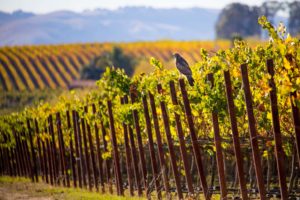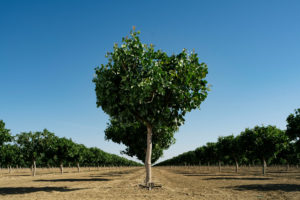Driving out to the coast among the seemingly endless ranks of Marin County hills, studded with rock outcrops and spotted with grazing cows, you can feel the calmness that flows from a stable landscape. It has always been this way, you feel; it will always be this way. The first thought is partially an illusion; the second is still essentially a hope.
In the 1960s it was taken for granted that the process that had already transformed East Marin—the rolling conversion of dairy ranches to suburbs—would repeat itself in the west. A general plan adopted in 1969 foresaw 125,000 people living along Tomales Bay and in the Olema Valley next to Point Reyes National Seashore. Speculators were busy buying up land to cash in on the inevitable.
But the political winds shifted in 1970, and soon the county reversed course. The western region, the Board of Supervisors now proclaimed, was to remain rural, a mixture of parkland and farms. Throughout the decade, the county struggled to make this decision stick with zoning, coupled with measures directly supportive of farmers. By 1980 it was pretty clear that no “blockbuster” development was going to occur in West Marin. It still seemed likely, though, that under relentless market pressures commercial agriculture would give way to a landscape of “ranchettes,” small hobby farms or rural estates around enormous houses.
The county considered further stiffening its zoning, but that step would have driven the farmers into renewed opposition. And zoning is always subject to change. Two remarkable women—rancher and community leader Ellen Straus and her friend Phyllis Faber, biologist and sometime coastal commissioner—set out to come up with something more permanent. The women turned for advice to the Trust for Public Land, which was working to seed land trusts around the country. Out of these conversations arose the idea of a new kind of trust: one devoted solely to agricultural land, working exclusively through the purchase of easements, and—most unusual of all—run largely by ranchers, not environmentalists and lawyers. Ralph Grossi, an open-minded young dairyman, provided a vital bridge to the skeptical farm community. The Marin Agricultural Land Trust (MALT) was incorporated in 1980.
MALT got off the ground slowly. No one wanted to be first in the door; there was some feeling that selling one’s development rights was an admission of economic difficulties that many shared but no one wished to advertise. The first easement was secured in 1983. A second followed the next year. Two more in 1985; three in 1986. Three per year was the average pace thereafter. Aided by money from foundations and state bond issues, MALT was soon becoming a quiet power in west county. At this writing, 57 farms and ranches covering 38,000 acres are under easement, nearly one third of the privately owned agricultural land in Marin. Executive Director Bob Berner notes with pleasure how scattered parcels are coalescing here and there into large coherent blocks. And two areas once thought natural targets for early development—the Chileno Valley southwest of Petaluma and the Nicasio Basin northwest of San Rafael—are steadily filling in with MALT’s reassuring green.
Over the next five years, MALT hopes to secure another 12,500 acres, at a predicted cost of $30 million. If farmers continue to walk in the door at the current rate, the next quarter century could see something truly remarkable: the protection of an entire working landscape by conservation easement.
In keeping with the central purpose of the organization, MALT’s easement contracts name agriculture first; open space, scenic, and natural values follow. Language prohibits uses that degrade soil or water quality, a general standard that precludes, for instance, overgrazing. Recent contracts have included more specific provisions. One in the Chileno Valley, for instance, designates a special Creek Conservation Area along an important stream. To make sure that lands under easement do not after all become rural “estates,” some recent easements include language restricting the size of future houses. Such added provisions increase the price paid for the easement.
Most of MALT’s territory is in the watershed of Tomales Bay, one of California’s cleanest and healthiest large estuaries; agriculture in the region has faced special scrutiny as a result. Each decade brings higher standards for keeping animal waste away from streams. MALT has recently started a Stewardship Assistance Program of small grants, up to $25,000, designed in part to help owners improve water quality.
More than any other force, MALT turned around the “story” of agriculture in West Marin. Fatalism has given way to hope and hope to something approaching confidence. As MALT’s easements have spread across the landscape, the feeling has settled in that farming is here to stay.
To stay, but hardly to stay the same. To keep their heads above water financially, more and more local farmers are turning away from traditional dairying and livestock raising and toward the production of specialties for the choosy metropolitan consumer: organic milk, grass-fed beef, lovingly made “farmstead” cheeses. The old scenery of pastures and barns is gaining other textures from vineyards, olive groves, and heirloom vegetable farms.
What we sense here is a new relationship between city and country. Farmers who once felt preyed upon by diverse urban interests—developers, county planners, environmentalists with little grasp of agriculture—now see urban people as their allies and urban markets as their salvation. Families who might have bought tract housing on Tomales Bay (and then complained about animal smells) instead are here as customers and guests, buying the yields of the land and enjoying by car or bicycle or on horseback the scenery the farms preserve. In 1999, local growers launched a Marin Organic label to cement their claim on the market “over the hill.”
The West Marin example has attracted notice nationwide and beyond. This past November, Charles, Prince of Wales, and his wife Camilla put a royal stamp of approval on the experiment. The itinerary of their American tour included the farmer’s market in Point Reyes, an organic vegetable farm in Bolinas, and a visit with Bob Berner, head of the Marin Agricultural Land Trust.

.jpg)



